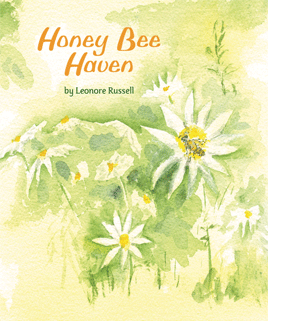Library Lady's Corner
Book Review - Honey Bee Haven January 12 2022

Honey Bee Haven that is a real delight. Teaching ourselves and our children about the precious work done by pollinators, especially bees, has become a topic of some urgency in the last decades. With gloriously colorful pictures, done in watercolor paintings by the author, and the simple telling of how bees live and work, a penetrating story gets told in this little masterpiece of a book. It is about the significance of the work of honey bees, and about our part in making them feel appreciated, cared-for, and loved!
May Day in the Waldorf School May 01 2015
May Day is a Northern Hemisphere festival (and is also called International Workers’ Day) and is celebrated in many Waldorf schools. It is an ancient tradition of celebrating the arrival of summer. Known as Beltane in Celtic lands, and celebrated by the Romans recognizing the goddess Flora, May Day is a popular tradition. The May Pole Dance is a joyful experience, and often the center of the May Day celebration. The May Pole often bears garlands and symbolizes the tree of life and growth of spring vegetation. This festival is celebrated as an entire school community. In most Waldorf schools, children from each grade take turns doing a May Pole dance. The patterns get more complicated as the children mature. Whole classes of children prepare “May Baskets,” hand-woven baskets of new spring flowers that are then hung on the fence posts or door handles or front steps of neighbors or loved ones to wish them a happy spring.A Brief History of Earth Day and Earth Day in Waldorf Schools April 22 2015
Everyday is an "earth day" within a Waldorf school but since 1970, April 22 has been formally observed as "Earth Day" across the nation. With every day that passes, the ill effects of modern civilization on the environment has become more and more evident. Climate change, air/water/ocean pollution, shrinking wetlands, deforestation, habitat destruction, ozone depletion, and water shortages are just a few of the issues facing the planet today.
Back in the early 1960’s, U.S. Senator Gaylord Nelson from Wisconsin began noticing that the condition of the environment was not being recognized on any political agenda despite evidence of degradation.
Haiku Day 俳句の日 April 17 2015
Haiku is short, Japanese poetry. The name, Haiku, is derived from the Japanese word, “kiru,” cutting. “Cut to the chase” might be a modern, North American interpretation of the reason for Haiku.
Traditionally, haiku (originally called “hokku”) is made up of 17 “on” or “morae,” that we might refer to as “syllables” or “beats:” 5 – 7 – 5. Classic Haiku have two images with a “cutting word” in between, hence the “kiru” or cutting reference in the name. Also classic Haiku are seasonal and at least one image of a season appears in it. Everyday images are usually expected for an authentic Haiku.
Passover and Easter ~ this year they are very close! April 03 2015
Each year, like a symbol of the burgeoning spring itself, religious celebrations mark the season of the rebirth of the Earth.
Christians celebrate Easter and Hebrews celebrate Passover. Both holidays express the wonder of new things and the confidence in the regenerative power of the Earth and of human possibilities.
Passover is one of the oldest rituals known, and a remembrance of a story from five thousand years ago, or more. After many generations of enslavement by Egyptian Pharaohs as a people, the Jewish nation planned to leave this life of slavery forever.
